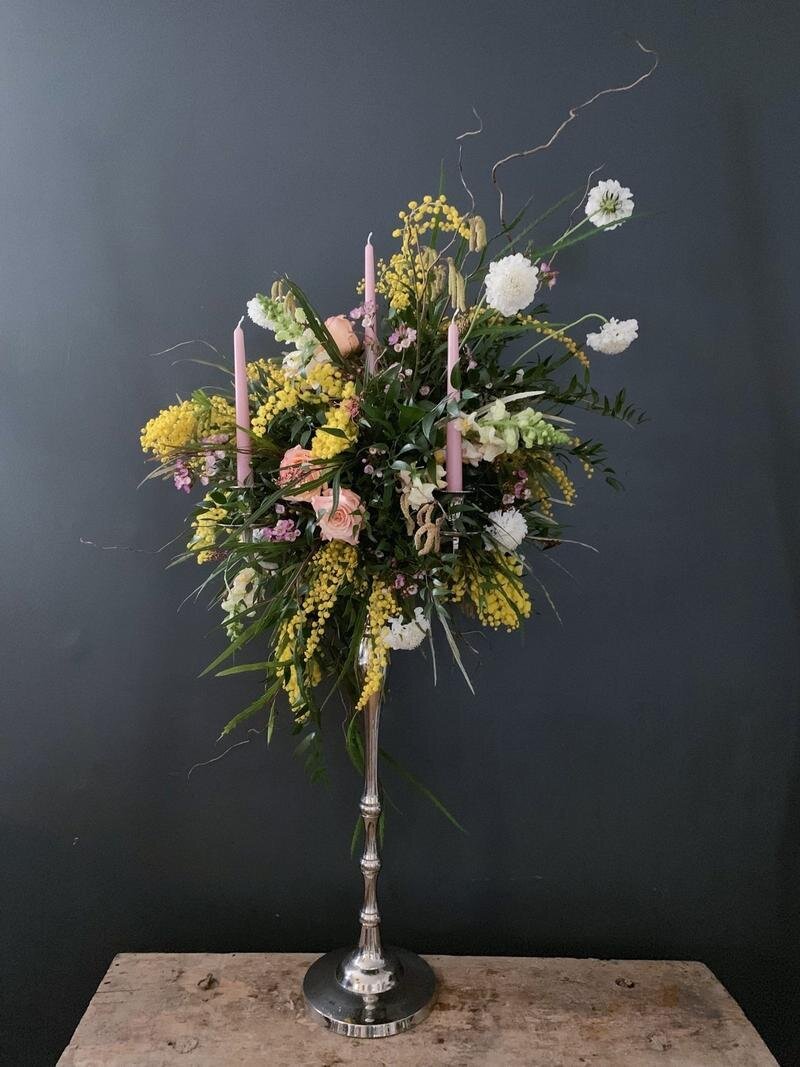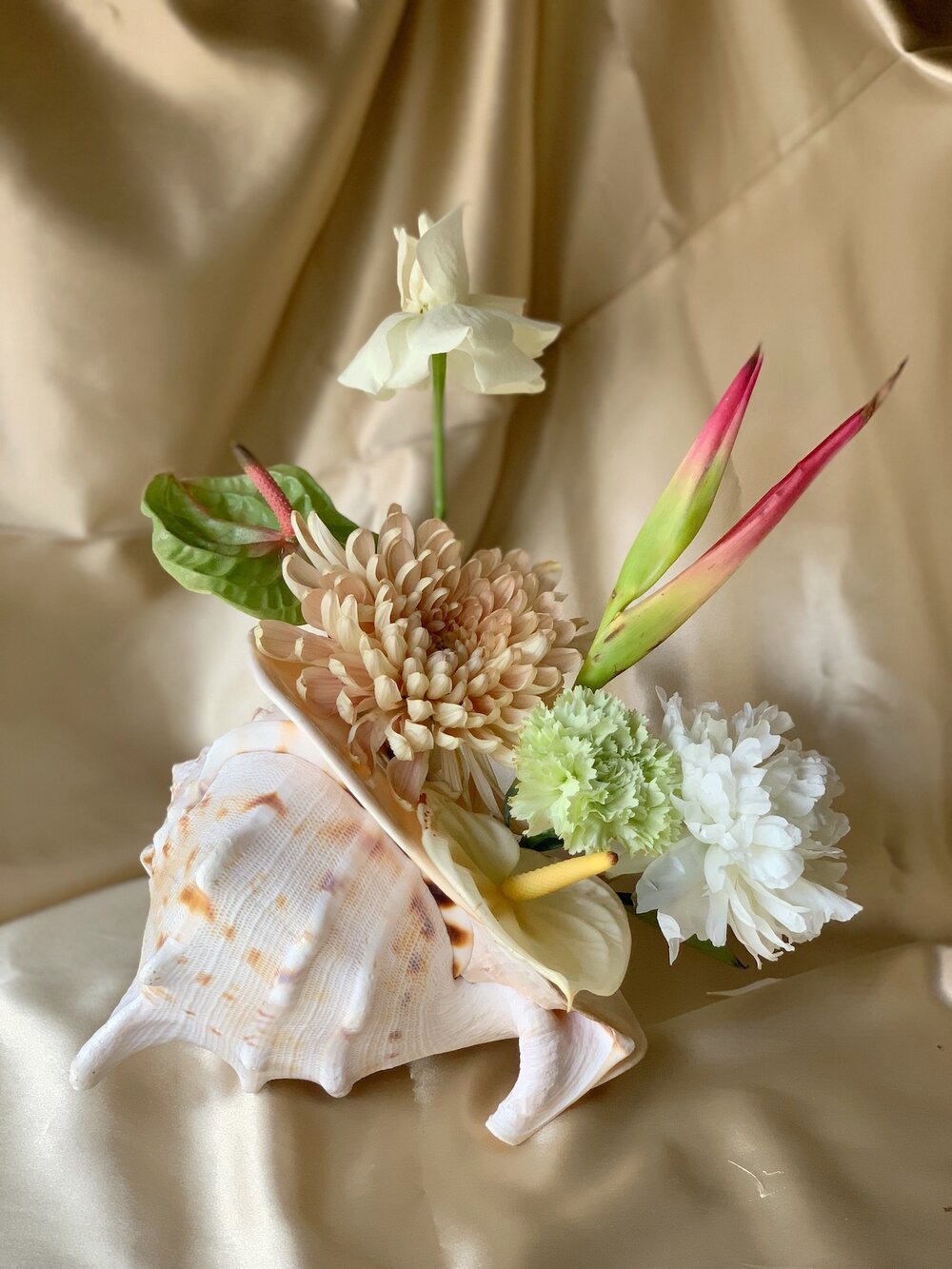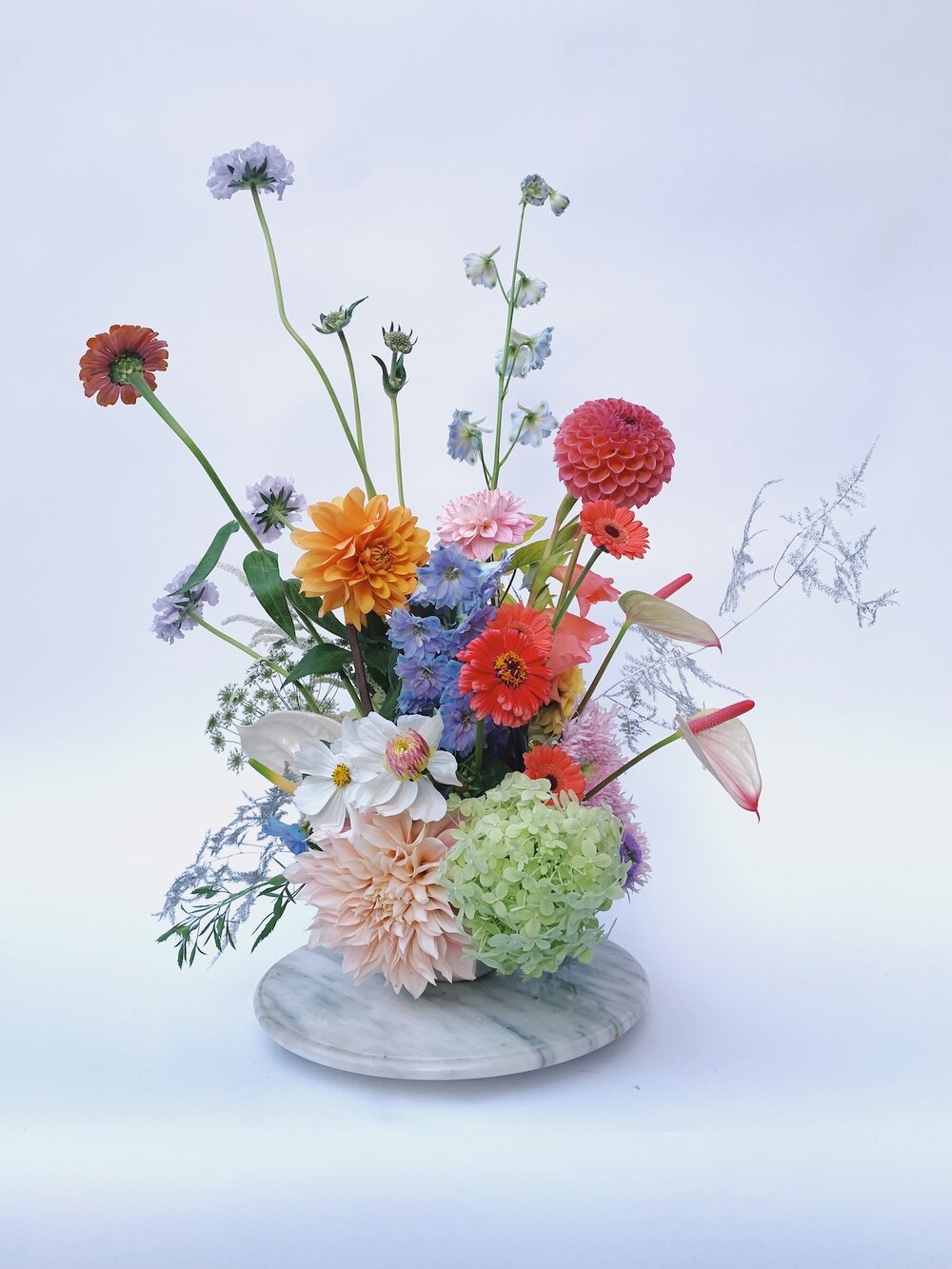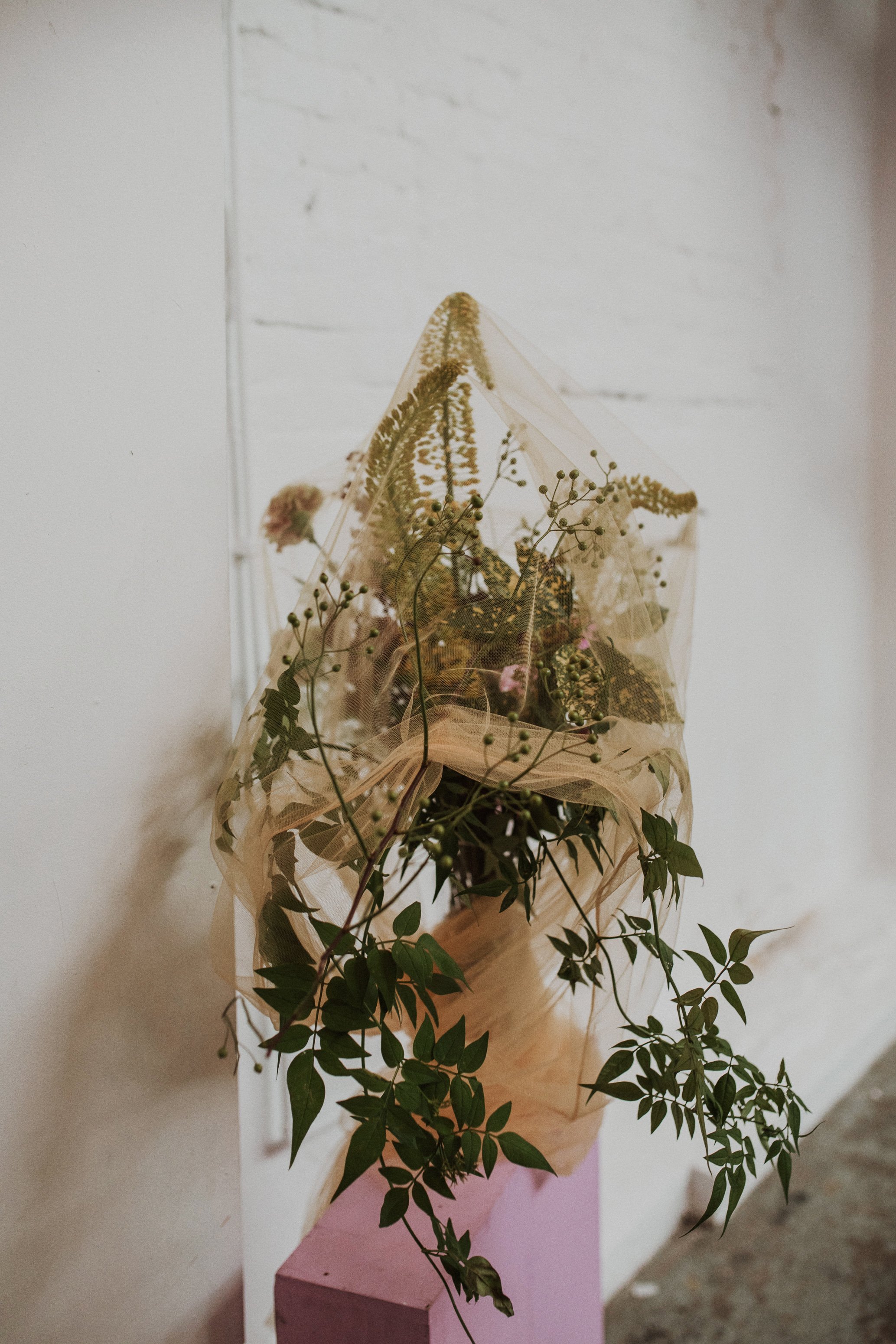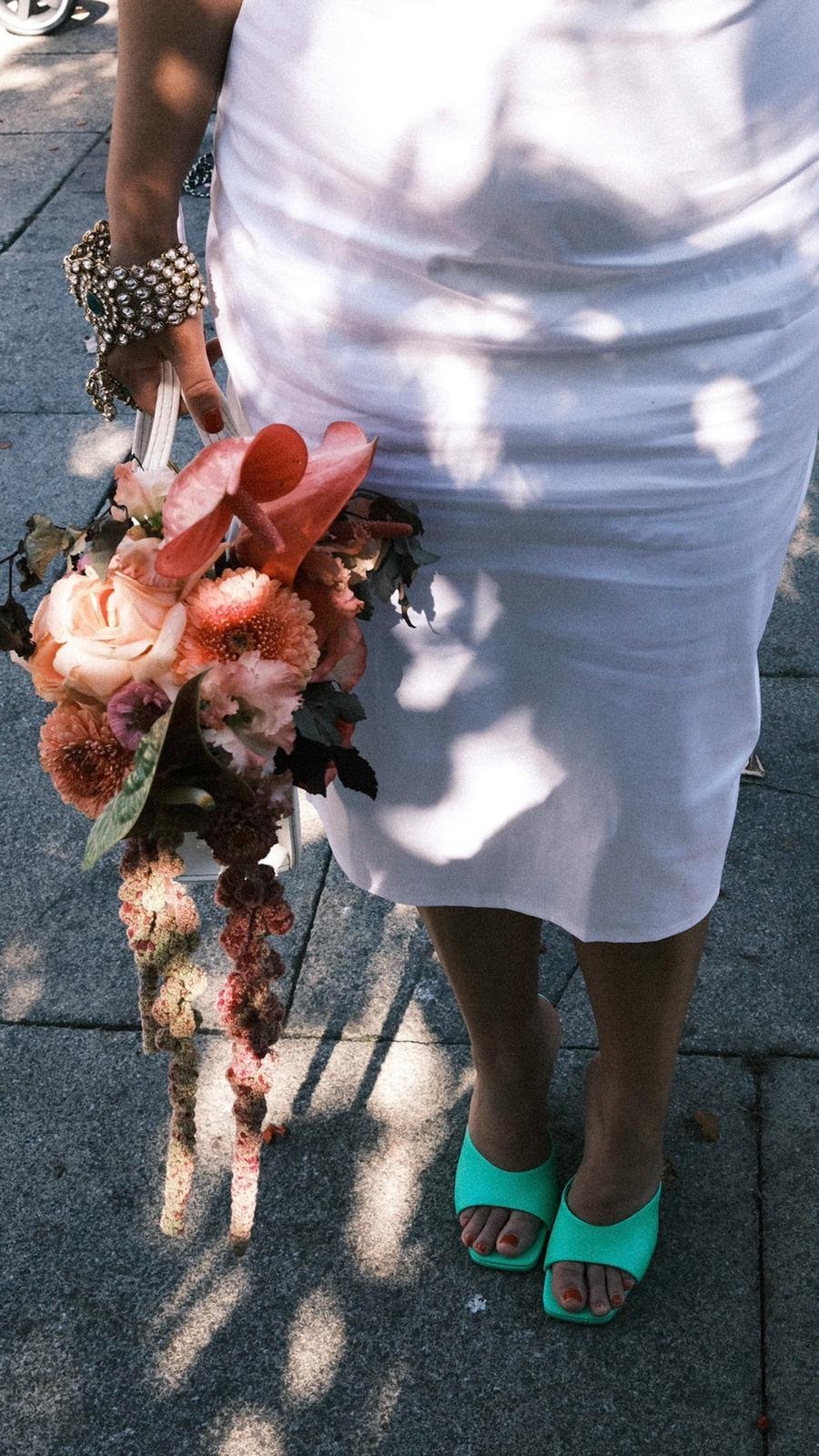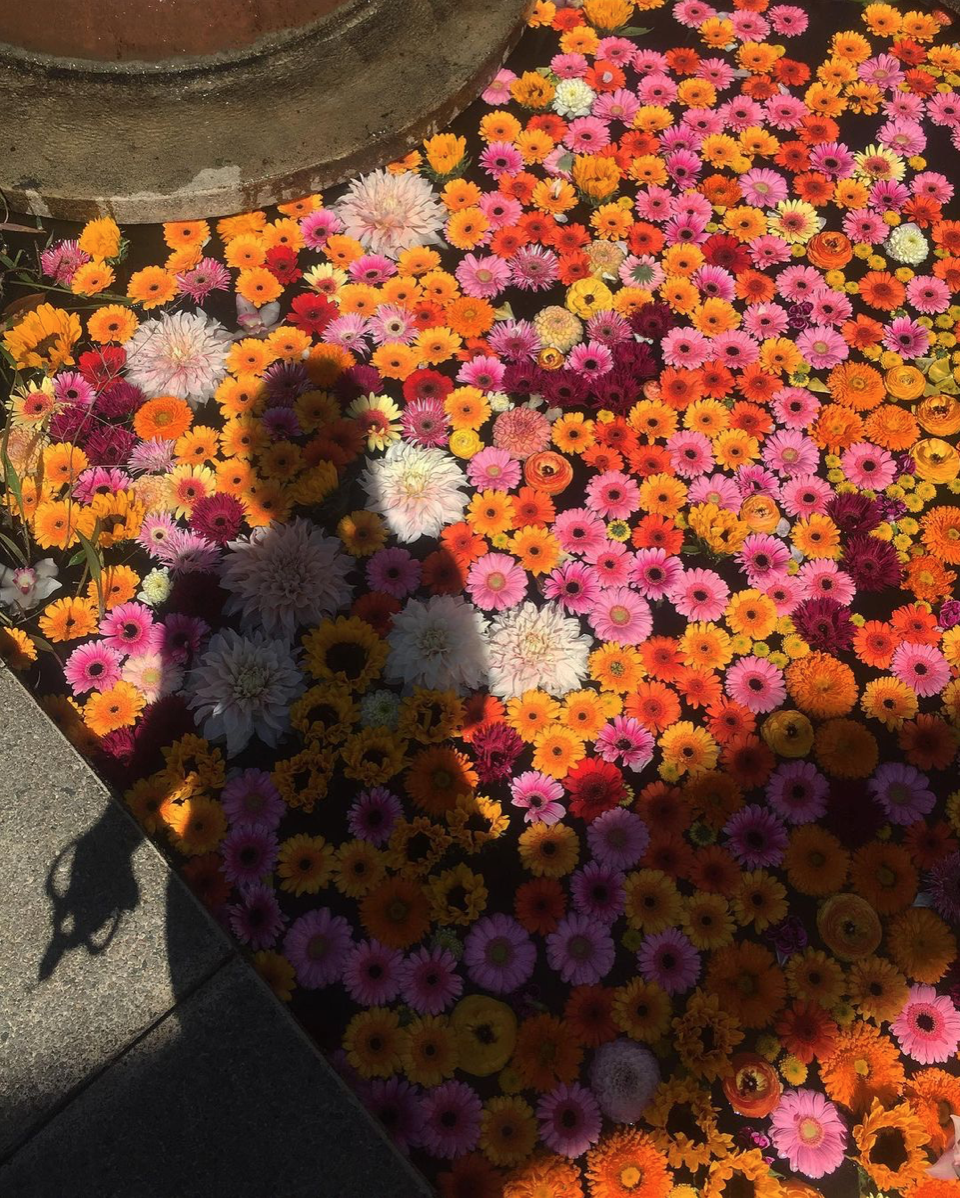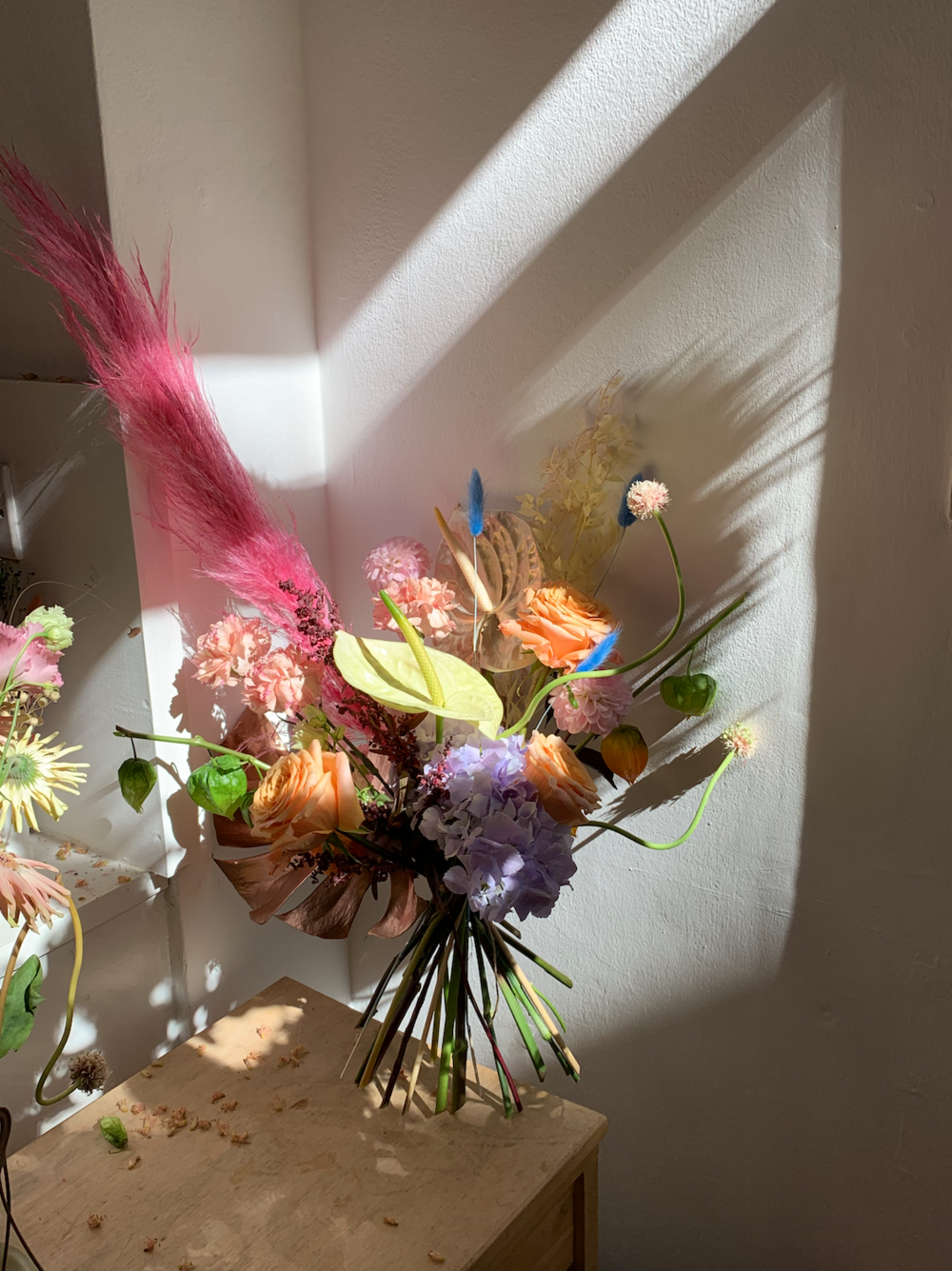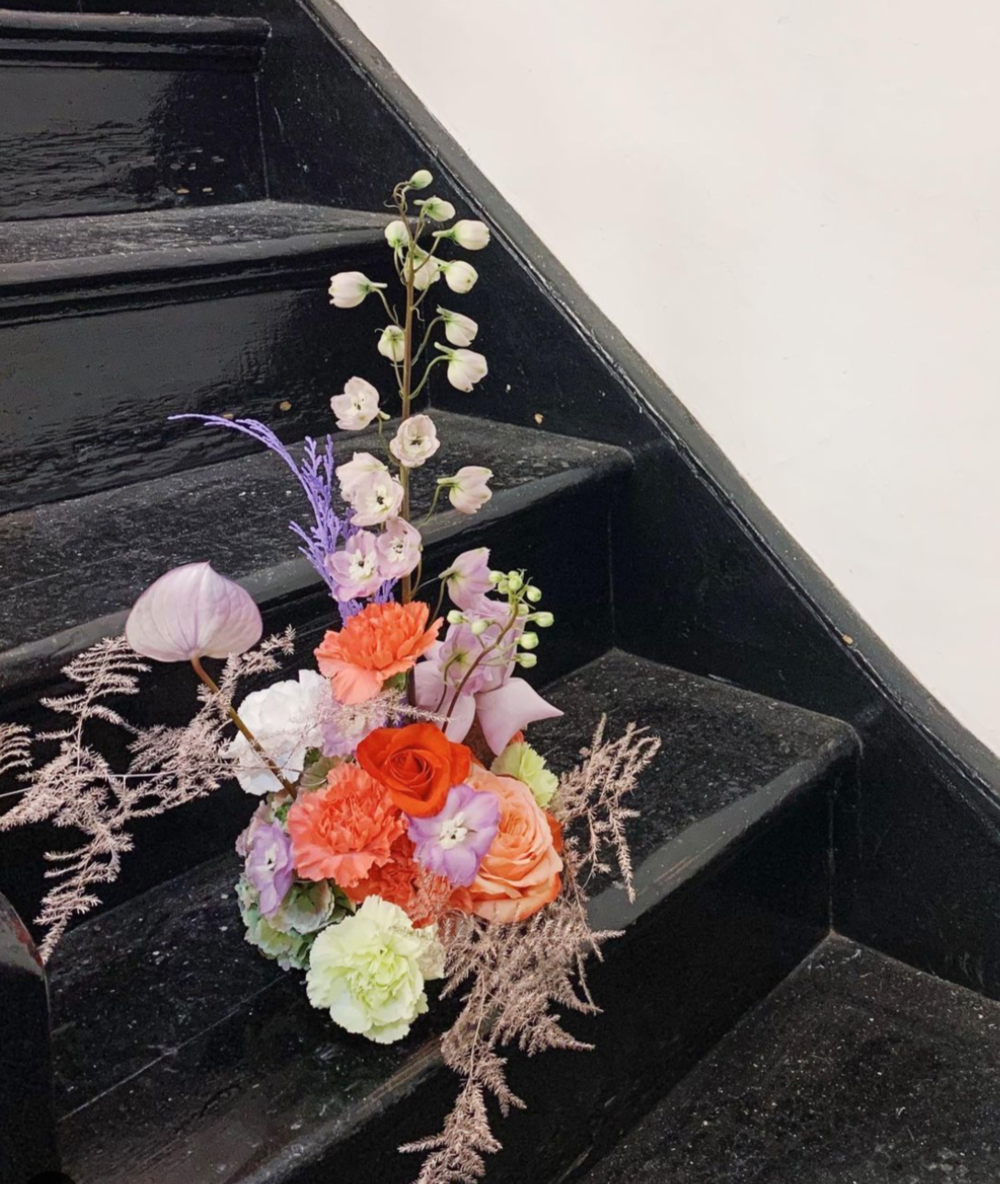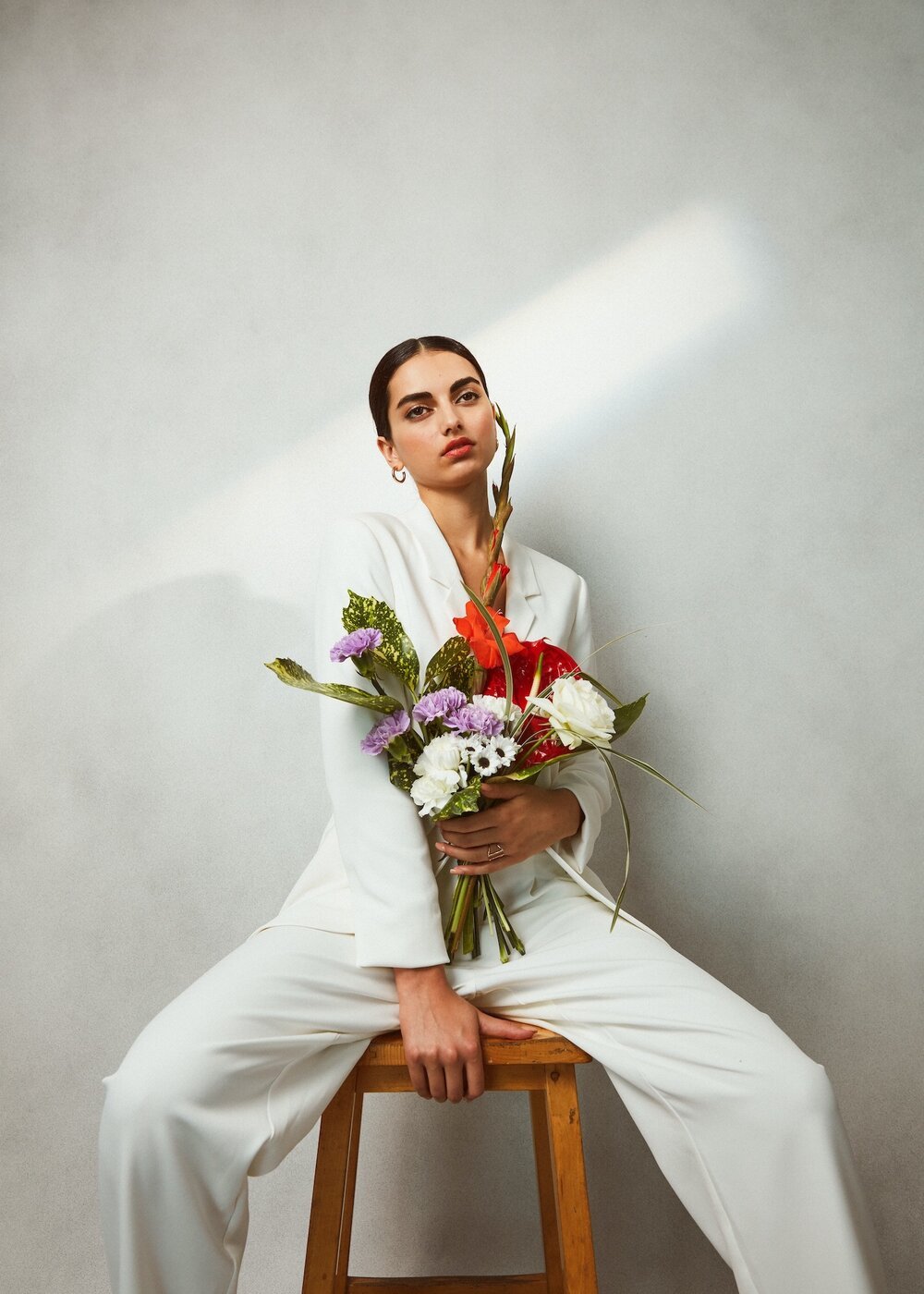Fluoresse: One Wild and Precious Life
I meet with Jess Runcimen in the last days of 2021. She’s away from home and her studio, seeing family in Glasgow while we e-mail, but safely ensconced in a corner of her boyfriend’s parent’s home while we Zoom. We wish each other a very Merry Betwixtmas—that time of year where you justify eating an entire box of Quality Streets for breakfast and otherwise subsist on endless leftovers. As the light fades across her face—signaling a mid-winter sun that’s setting on us both—a light from within Jess begins to burn as she talks all things floral curation and her path out of fast fashion and into slow floristry. The light is like the fluorescence she’s now named for.
Fluorescence:
(def.) the emission of light by a substance that has absorbed light or other electromagnetic radiation. A form of luminescence.
Initially, she was called Precious and Wild. “It’s from a poem,” she tells me and looks away from the glowing screen to think of the words. “Something about a grasshopper—she died recently…” I know the very one. “Mary Oliver?” I supply. The light in Jess grows as she realizes only moments into our chat that we speak the same language. Jess is recalling the early lines in Mary Oliver’s “A Summer’s Day,” which ends:
“Doesn't everything die at last, and too soon?
Tell me, what is it you plan to do
With your one wild and precious life?”
“One of my first jobs as a freelance creative was making 600 bouquets for a New Balance collab launch. Because of the size of the job, Wild and Precious was created—suddenly, I was doing it.” She quit her decade-long career in fashion to pursue floristry in December of 2018 and began her training soon after. Despite being a self-reported quiet soul, Jess knew floristry was for her when she found herself pushing to the front of the group during her training—trying to get the most information, the best pieces for her creations, eager to be seen. “I had just finished chemo earlier that year—you can’t go back and do something you’ve done before. You have to run with second chances.” Having answered Oliver’s question—what would Jess do with her one wild and precious life?; she would create!—Jess relaunched herself as Fluoresse.
“I came across an article online about an American photographer who had been taking pictures of flowers with UV lighting—unreal, fiberoptic photographs,” she shares with me. She speaks of the work of photographer Craig P. Burrows whose photos are every bit as ethereal, intriguing and captivating as Jess suggests. It would be hard NOT to be inspired by Burrows’s UVIVF series, which show various—often familiar—flora and fauna under the unique treatment of UV lighting and his own artistic eye. I realize how apropos the visual is for Jess’s work and how deeply the meaning of fluorescing runs—down to the very marrow of her—a Cancer survivor whose career is a direct result of the cruelly healing properties of radiation treatment. Not all forms of luminescence are as pure and perfect as dappled, indirect sunlight or an eco-friendly halogen in a spare creative studio. Some lights burn as they make and remake you
Finding her voice goes hand-in-hand with finding the right light to photograph her work in.
She does it all herself and doesn't mind getting a bit grimy for the effort—the right light for her work isn’t necessarily the best light, especially after a recent capture next to the bin shed became an insta-favorite. Jess encourages other creators to find their light, to engage with their own voices and capture their own personal voice in their work. “Anybody who does creative work—how you capture it is as important as who made it.” It’s the biggest compliment she can imagine—being seen as the photographer of her own work.
Our conversation, inevitably, strays from talk of light to sharing the darkest days of our lives—both survivors of eradicating auto-immune illnesses, we’ve both been on the same page in our different stories, we’ve both seen ourselves captured in strange light. Whether Jess is aware or not, she speaks of herself in floral terms—”I went to ground,” she says of her days in treatment when no one really knew whether her bald head was a fashion choice or an indication of the chemotherapy she was keeping to herself. “There’s a quote about the strength of flowers…” she struggles to find it. But maybe that’s because there are so many! Flowers seem particularly prone to draw trite comparisons to life’s greatest challenges and how best to meet them. Cancer survivors are, I think, often afraid of becoming the cliche—we are afraid our stories will be used as inspiration porn—the bane of the disabled community—or else will be skewed so that our survival is no longer about our survival, but about the idea of what it means to survive, to thrive, or to regrow. “I’m an onion,” Jess claims when the quote won’t come, all while heralding the beauty of the flower that dares to grow through concrete. She’s an onion—layer upon layer of determination and full of the perpetual possibility of regrowth. To write about Jess’s admiration for zinnias, her passion for sustainability in floristry, and her love of large floral installations without understanding the very roots of Fluoresse would be like handing someone a wedding bouquet (anyone who wants one should carry one, Jess urges) without any reference to the path that led them to the aisle and the person waiting at the other end.
Was it always weddings?
“No, it wasn’t.”
It began with Christmas wreaths—her mates and former colleagues were so incredibly supportive and helped her launch herself into the wider world of floristry, leading her to create the largest wreath she had or has ever made—30 inches! This is likely where her love of installation-based floral design came from—she is so excited by people’s departure from the tiny to the mighty when it comes to including florals in their wedding day. She particularly dreams of someone one day inviting her to collaborate on a Jane Austen themed event. She would love to fill a ballroom with flowers in ode to the author and her characters, namely a particular Bennett sister who began her story without prospects or an interest in them, only to end up an enviable bride.
She’s also very excited by the shift in people’s senses and sensibilities towards sustainable, seasonal choices in food and floristry. However, one of the best wedding stories Jess shares in her softly lilting Scottish accent is of an August bride whose mother carried Lily of the Valley in her bouquet many years before. A proponent of supporting seasonality in florals—mimicking the seasonality Jess observed during her many years of working in fashion—she knew that Lily of the Valley was a spring flower and very unlikely to be found in time for the late summer date, but that didn’t mean the bride would have to go without this important piece of her family’s story.
“I found them, but I didn’t tell them until the day of the wedding. She cried—her Mum cried. I cried handing over the bouquet,” Jess says with a warm and fond smile. Then she goes a step further, “I managed to get enough for them to take home to plant in their garden.” We’ve both beaten back tears during our time together, speaking about beautiful things, dark days and the right way to capture a story and I silently join in the line of tears that formed around this bouquet, remembering that my own mother carried Stargazer Lilies and that my grandmother loved Peonies best of all flowers. Jess tells me more about how weddings should be, “You don’t have to fulfill a checklist. It’s a commitment, two people falling in love. Everything that comes after is the more important bit— a wedding should reflect what has come before and will come after. Most Curious knows that—these couples are making a commitment for the future, it’s not just about a day. If you’re going to spend that amount of money let it really mean something.” This is the way to tell a story—a story of renewal, of seasonality, of the best light not always being the good light. It’s in the work of a creator like Jess who knows how to craft relationship through flora and fauna—a relationship between a couple and a florist, but also a relationship between a person on a special day in their life to all the moments that brought them that far. “It’s about trust,” Jess goes on to say, “For me it’s a personal thing—If I’m doing your wedding, I’m invested in it. It’s a two-way thing—if you invest in me, I invest in you.” She recognizes that the investment is more than financial, it’s personal and that’s why she advises her couples to stick to their budgets and let her make the most of whatever they have to invest. “People ask about my prices, but don’t you want to know about my passion?” I certainly could never tire of hearing about it, but the light has completely faded and it’s growing cold in my tiny office and Jess has been pressed into the shadows of the room she’s in. Still, we have time for one more story.
It’s the story about a friend who went through diagnosis and treatment with her, not as a spectator or support system, but as an accomplice in the work of surviving and regenerating; they both found the same strange lumps in their necks around the same time and are both still here to trade tales. “She went off to do pilates, I went off to become a florist. We’ve come together to do these seasonal workshops. We use seasonal flowers and we talk about the season and where we are in our bodies. Flowers are imperfect; they’re like us. Completely beautiful, but they are imperfect and we accept that about them. It’s an interesting thing to work with—a luxury item, highly perishable, and so it’s quite a unique material to work with.
Flowers are about people. You have a baby, somebody buys you flowers; there’s a birthday, they buy you flowers. You’re unwell, they buy you flowers; they say they’re sorry, they buy you flowers. Weddings…funerals. They tend to be there for the real important parts of our life—they tell stories.”
Jess doesn’t have a favorite flower and I’m fortunate not to have asked her to choose—it just comes up naturally—but it makes sense that a woman who tells her story through flowers wouldn’t dare limit the expression to just one bloom—a moment in a season that will pass and come again, or a single word in a sentence on a page in a book in a library; a petal on a bloom on a stem from a root system in a garden on the Earth.
So what happens at the end of the story we all know? The flowers die, of course—it’s inevitable—but before they reach their natural ends, Jess gives them an epilogue worthy of their beauty, their value and their time with us mere mortals. “I want to be known for giving a sustainable afterlife to flowers.” She details her past experiences placing flowers from events in women’s shelters and other refuges for people experiencing their darkest days; “When they enter they may only have the clothes on their back. You’re valid, seen and worthy of these flowers, which represent your strength,” she says as if speaking to the recipients themselves. In the future she would like to work more with social enterprises—communal gardens and Floral Angels who specialize in recycling and restyling flowers. Jess has a lot of ideas and hopes to aid in the no-judgement education of small businesses and large corporations in the shift from florist foam towards moss and other sustainable, ecological efforts. “It cannot be a tribute, it has to be sustained,” she says of her longterm goal for Fluoresse. In the same way I hope I have offered Jess something similar during our time together—more than a tribute to her story, but a sustainable understanding of the way her identity has grown out of tragedy, but is still growing, her story more than the product of a single season of her life.
I’ll let Jess have the final word on the matter of her life’s work:
“It is about storytelling because I think flowers are about people.”


